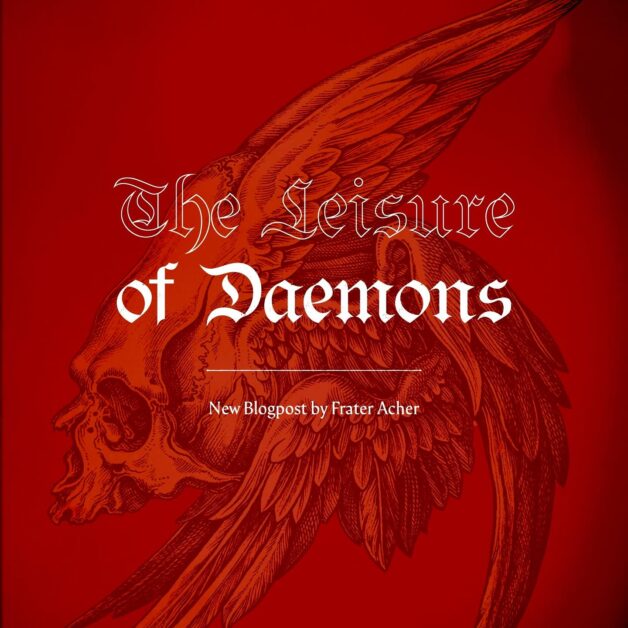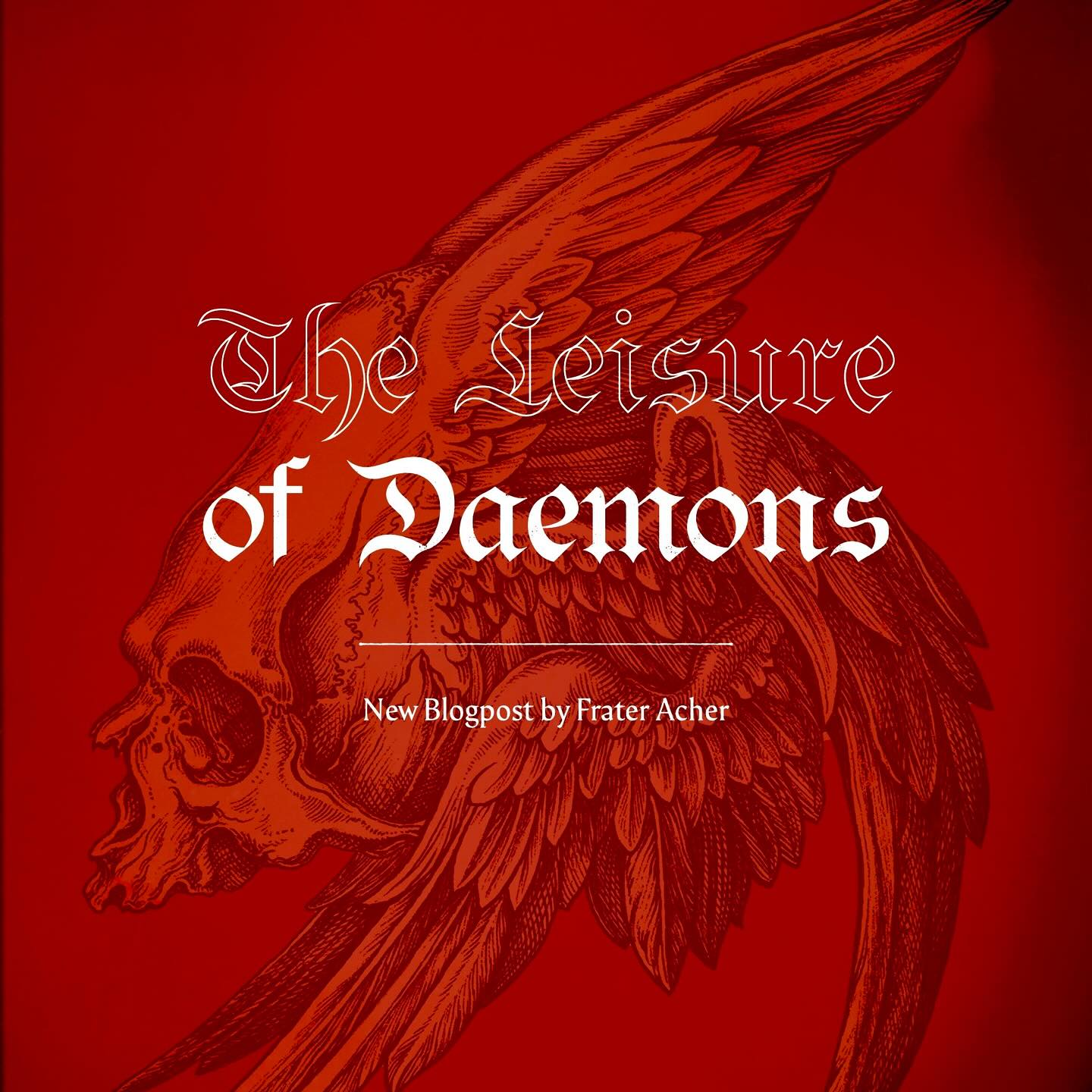Frater Achen posted a link to a book in progress, The Leisure of Demons on FB. His post says:
For the past 18 months I have been co-creating and capturing the kind of magic that becomes possible when we bring no more human agenda into the circle of spirits.
The central question is simple: What happens when we seek communion with spirits, daemons, and gods/goddesses without wanting anything from them? What kind of magic would this be if it were no longer guided, determined, and limited by human needs? And what would it have to teach us – about the things daemons do when they are not abused as ‘task rabbits’ by petty humans?
Here is a short excerpt from the related Goêtic writings that emerged from these experiments. In total there is about 150 pages of new material, that I have handed over to the wonderful partners at Scarlet Imprint. My most radical and also most personal material to date, which will see the light of day on paper and ink, in linen and mail bags in spring 2025…
At the heart of most religious orthopraxia – the orthodox or correct way to practice – stands the aim of establishing conscious contact with a particular non-human entity. In Catholicism, this materialises as prayers to saints, Mother Mary or to Jesus himself. In Hindu and Buddhist Tantrism such contact takes the shape of identification with particular deity forms. And in classical Western magic – if we may call it a religious system – we encounter it as the ubiquitous invocation of daemons, angels, and gods. In a nutshell, we could say that the central sequence of most orthopraxies is one of aiming, calling, anchoring. The last term, anchoring, here refers to the process of binding together the human and the non-human person. Once contact has been established, a bond is formed between the two parties to affirm a mutually established interest. A promise is made to the saint, the seed mantra is animated by the deity, the statue is established as the dwelling of the daemon, or the pact between magician and demon is fixed in blood.
As different as the respective religious traditions may be, as culturally, historical, biographically imbued with the reality of their countries of origin and their original actors, their practices resemble each other in the essential sequence of aiming, calling, anchoring. What is essential is that all three concepts are actions initiated and directed from the side of the human actor. Man enters the church in search of the holy image of their choice, man sits down in the asana with the firm intention of finding the path to their deity, and man enters the magic circle armed for the encounter with the demonic entity of their choice.
Every spiritual practice is a journey. Some last seconds, others hours or days. In all of the examples given, the implicit assumption is that it is the human actor who holds the map in their hands, charting not only the terrain but also the paths of encounter along which daemonic contact is to take place. All of these journeys begin with the human determination to strive toward a particular goal. Aim, Call, Anchor is the ubiquitous motto of spiritual practice from the perspective of the radical Anthropocene: Humans step out into the spiritual vastness, and they determine when and whom to encounter. In all these systems, we find ourselves in a worldview that is unapologetically based on the implicit and unquestioned presumption of human supremacy. Even the suffering supplicant to their holy namesake is deeply rooted in this tradition: suffering and grief represent an intrusion into their human sovereignty – and now the restoration of their sovereignty, their physical and/or psychological integrity, is required, for which they seek spiritual assistance. The body of their practice is shaped along similar lines: spiritual beings are assistants, seemingly without agenda or purpose of their own, except to serve human concerns. They are called out of their slumbering existence into the wakefulness of prayer, meditation, invocation, whenever and wherever it suits the human actor to satisfy their own agenda.
The question arises: What do the gods do when we do not call upon them? What do daemons do when left to their own devices? What do the saints, the angels, the nagas, and the bhutas do when they have escaped the yoke of human task assignment? What, we should ask, do the play, the hunt, the talk, the sleep, the habitus of daemons and spirits look like when unburdened by human concerns? Most spiritual traditions know next to nothing about this. The silence in response to these questions runs like a crack through man-made religious traditions. Yet, this silence has nothing to do with the fact that there is nothing here to respond, explore, and understand. Rather, this silence stems from the fact that most people have simply not been interested in finding answers to it. Why ask questions that don’t serve yourself, let alone your own species? Why waste time exploring Otherness when you have your own field to plow, your own house to build, your own future to secure?
read more: https://goeteia.com/lore/the-leisure-of-daemons.


